So hello again and welcome back !
It’s been a busy few days for us over here in sunny, sunny Andalusia since we arrived in Sevilla on Saturday. We took the train from Cordoba – which passed safetly without any further potentially traumatic sandwich incidents 😂 and checked in to our hotel pretty close to the centre. It had a couple of lovely courtyards, as well as a great bar and rooftop terrace.
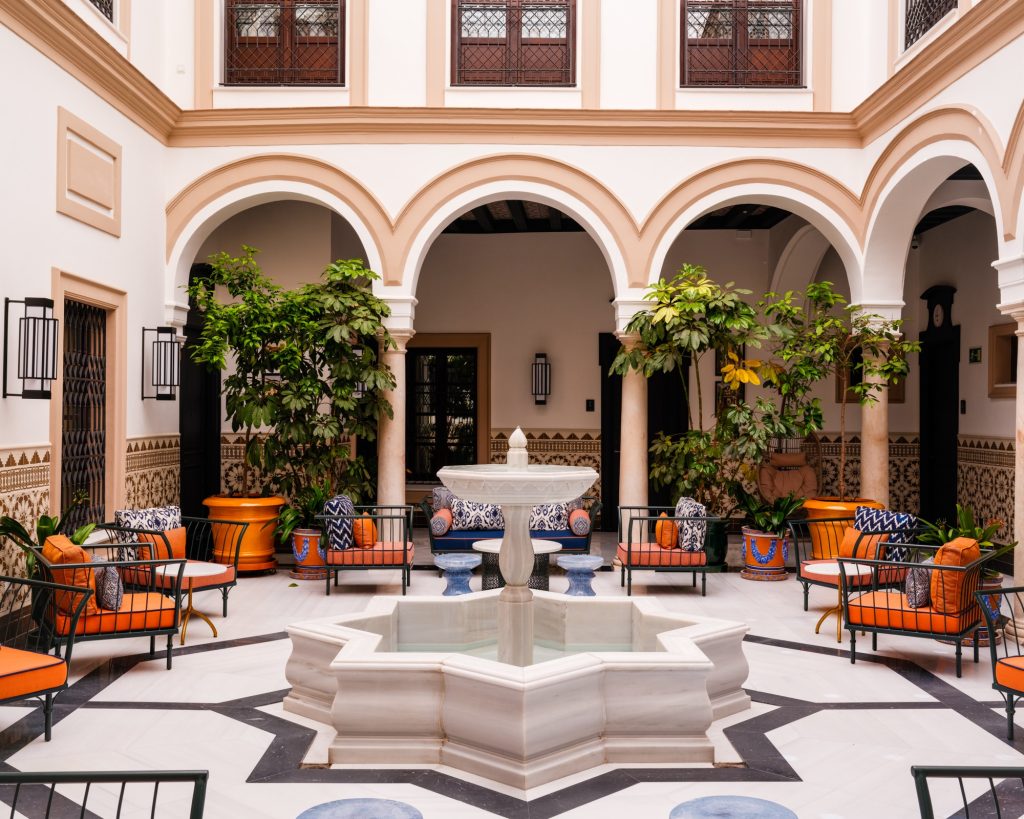
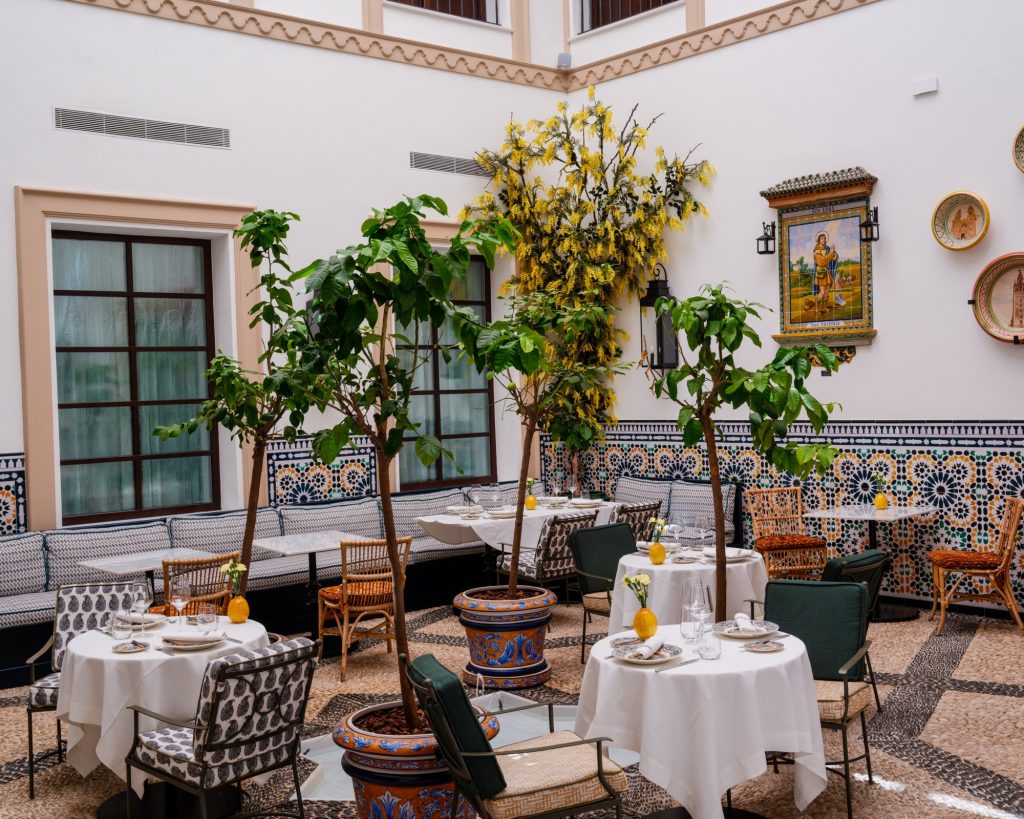
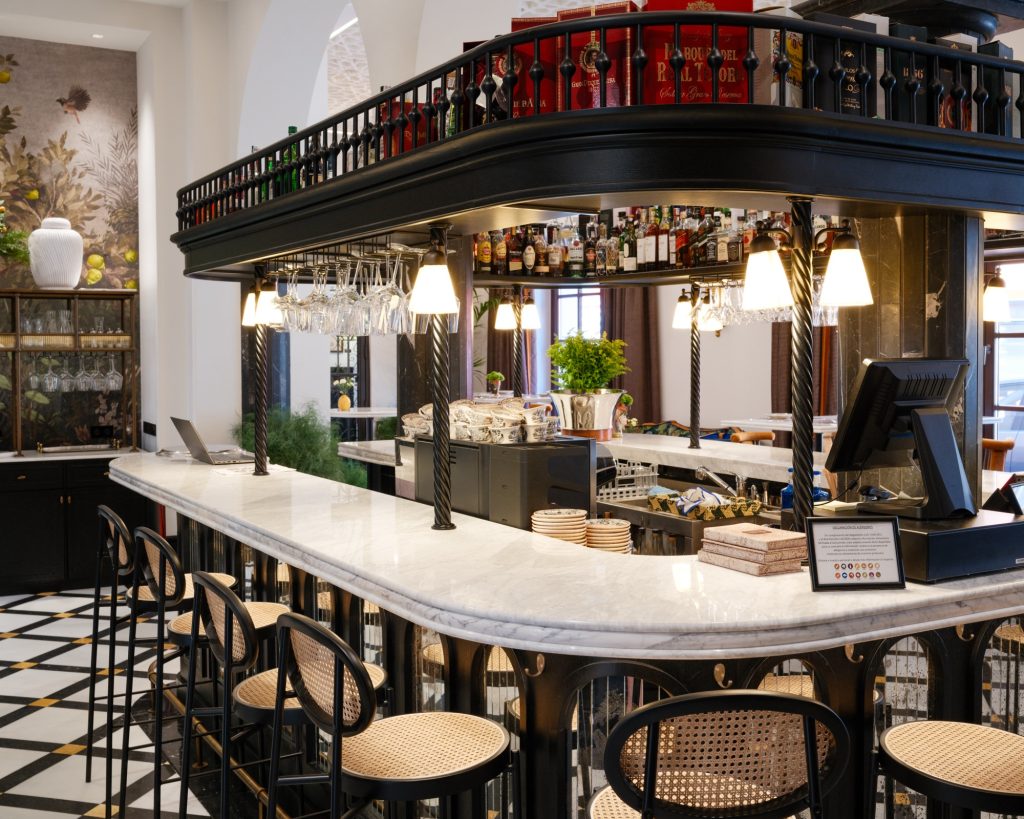
That evening we walked across the river to the Tirana district for a fabulous meal at a place called De La O. It was by far the best food we have had on our trip so far. As we refuse to take pictures of dinner you will have to console yourself by looking at their website. 😂
https://delaorestaurante.com/carta/
The next day I would like to say we got up bright and early but in reality it was nearly lunchtime before we headed out 😀. We decided to walk to Plaza de España in the Parque de Maria Luisa, taking in the narrow streets of the Jewish quarter on our way.
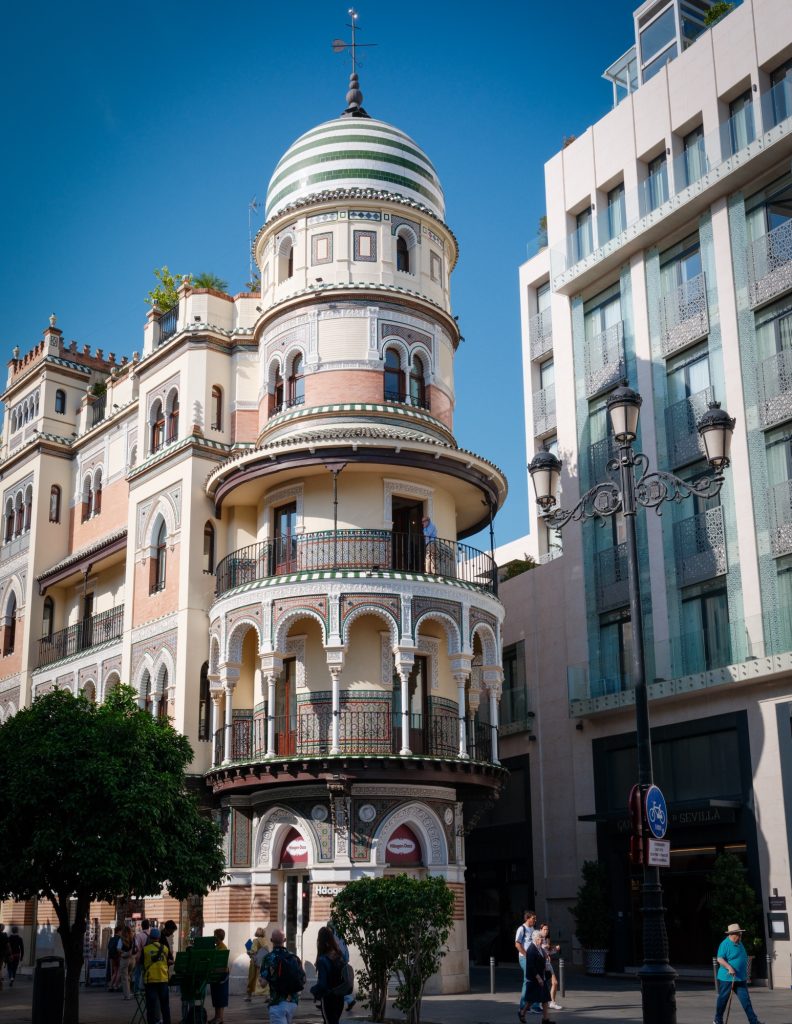
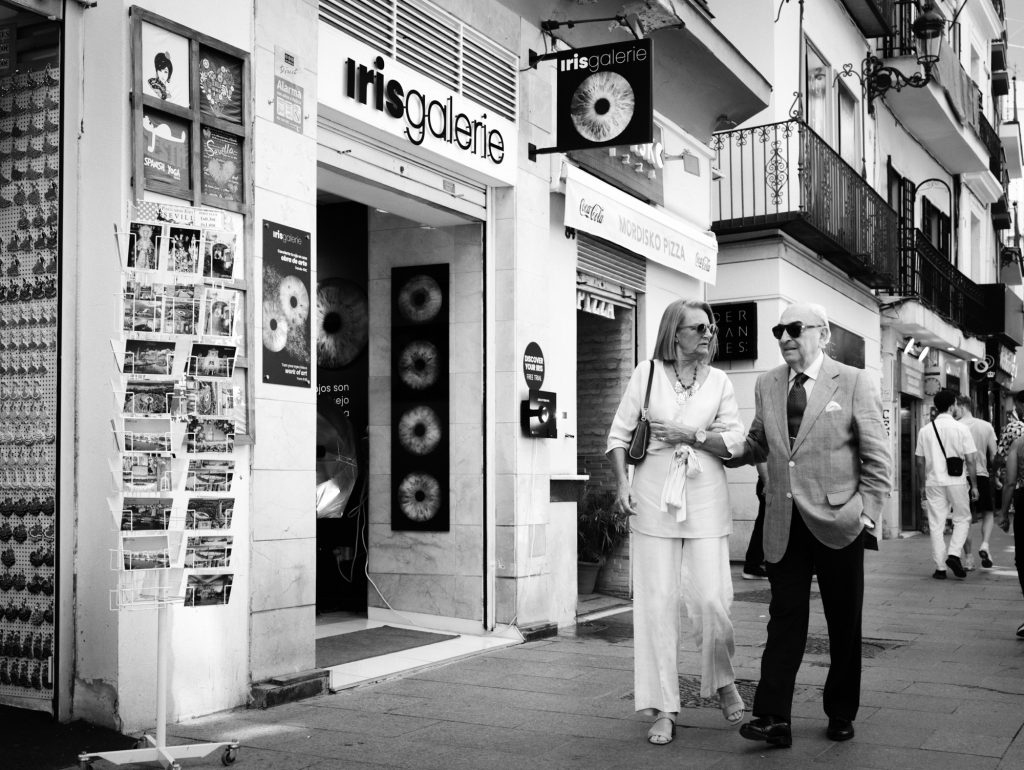
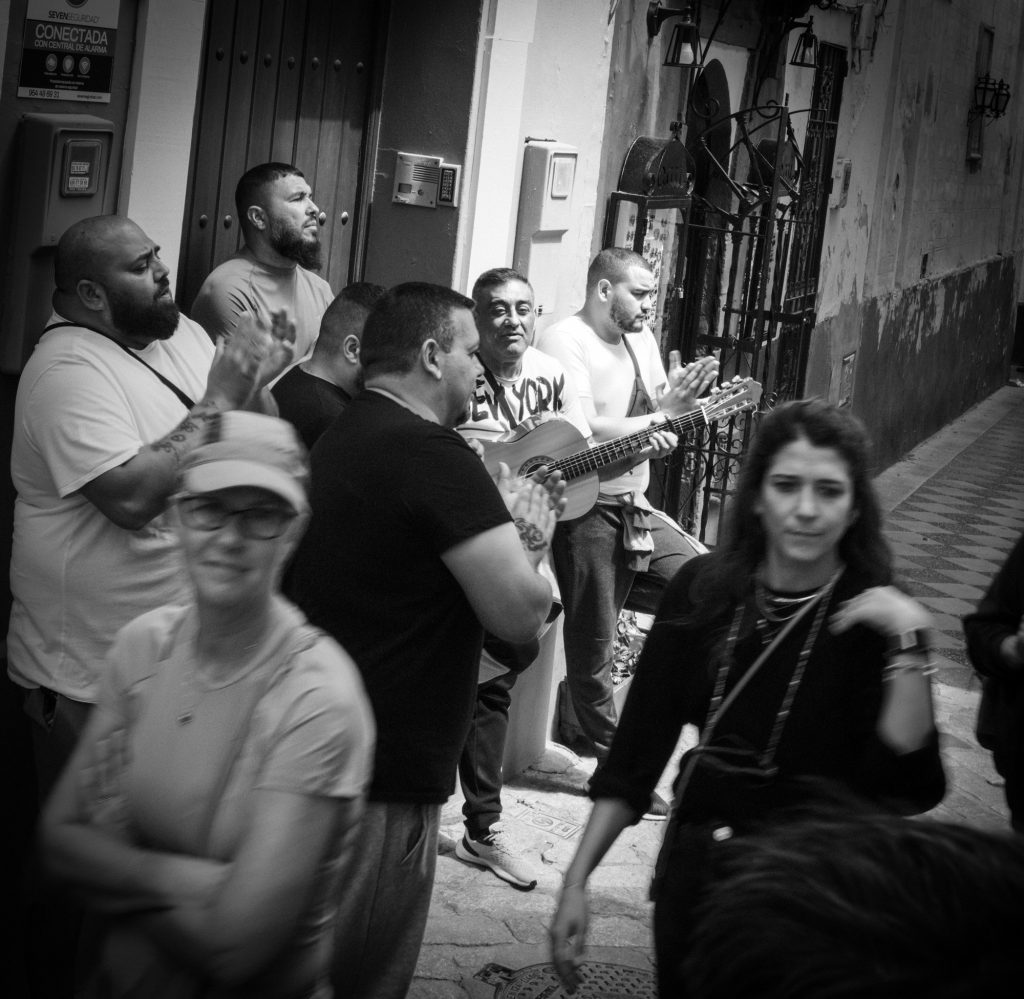
Finally we made it to the Plaza de Espana. It was built in 1928 for the Iberia-American exposition of 1929 and captures elements of baroque, renaissance and moorish styles of Spanish architecture.
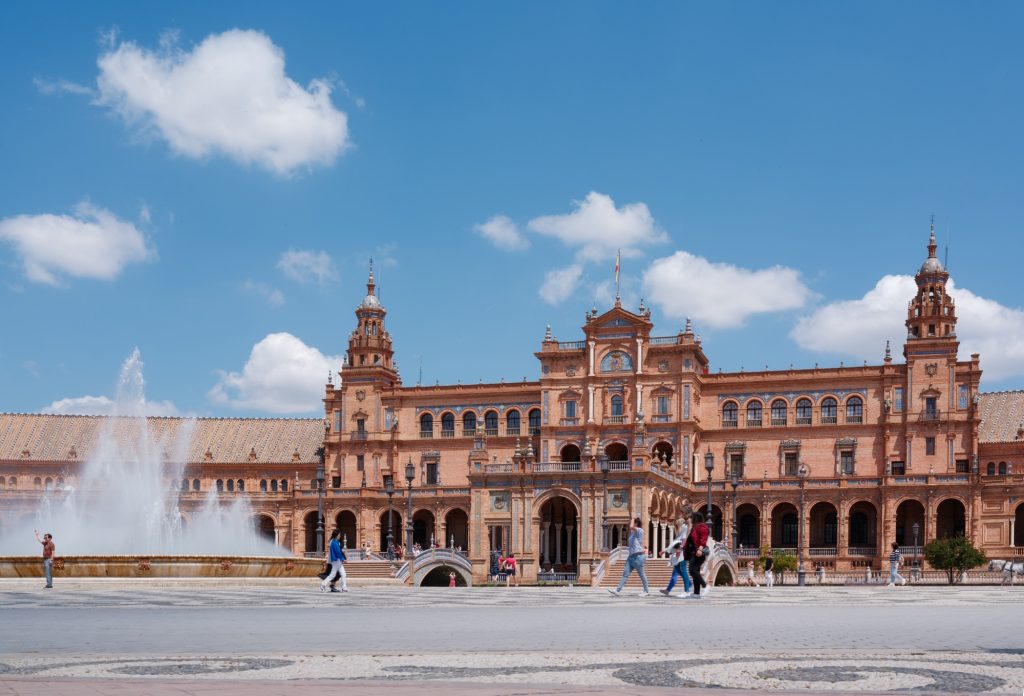
We also found two older gentlemen playing some fantastic Spanish guitar music in one of the alcoves.
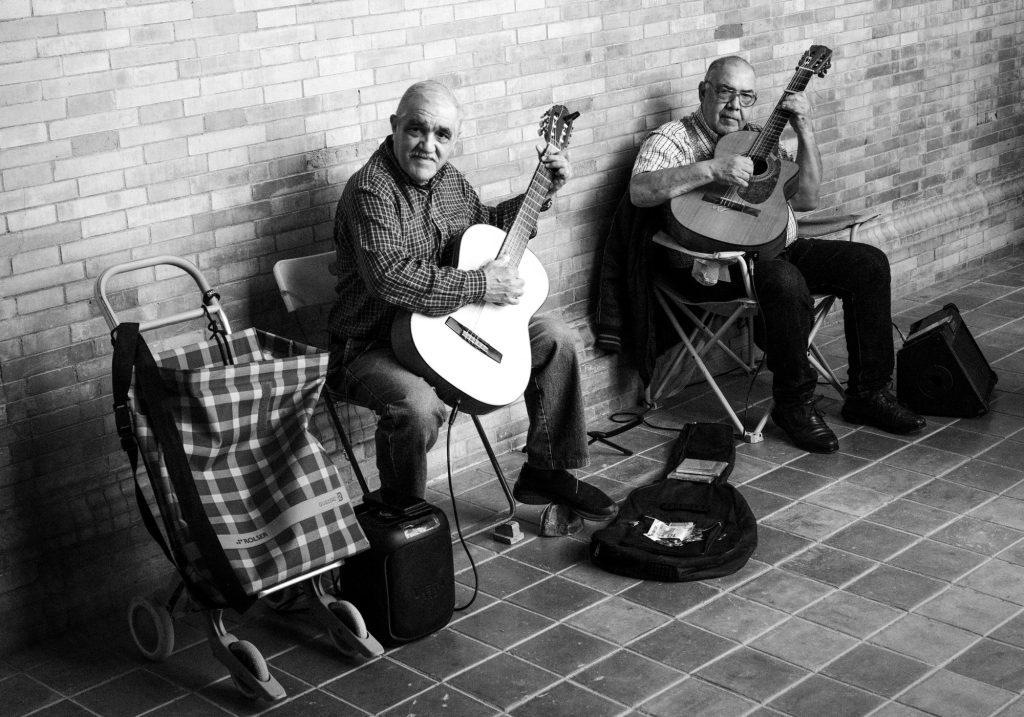
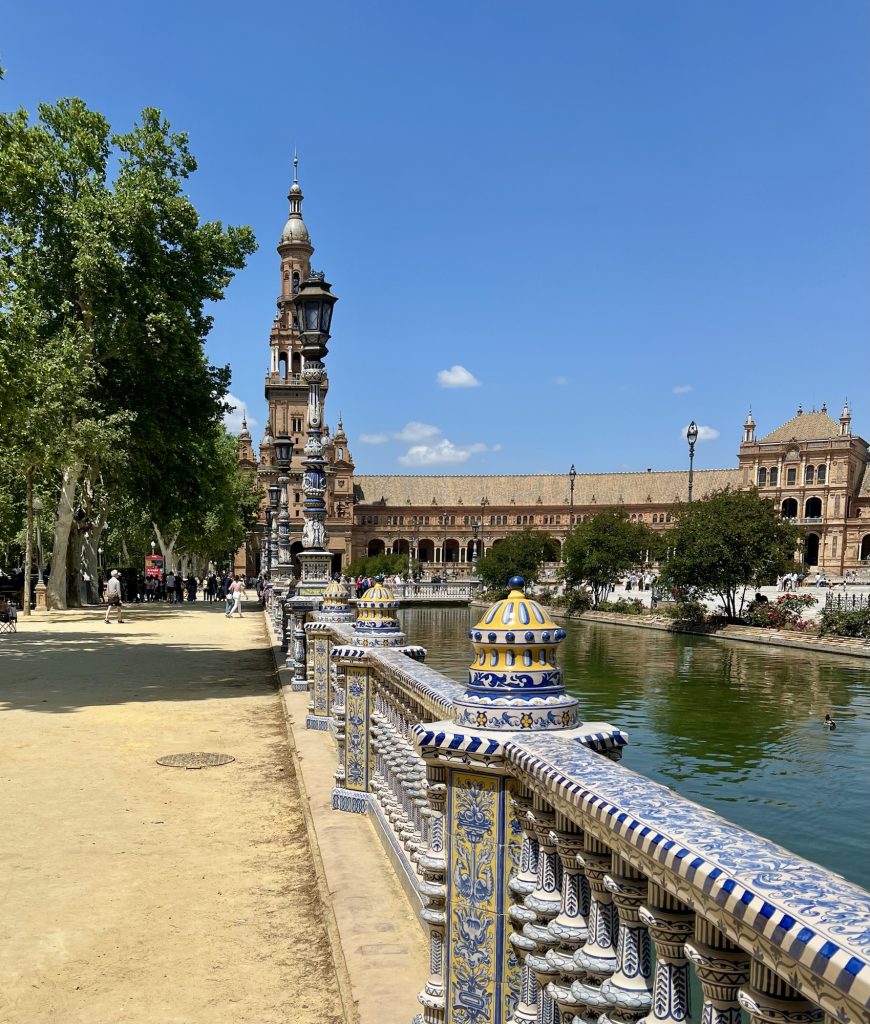
By now it was very hot so we thought we’d best head back to the hotel rooftop bar for some well earned refreshment.
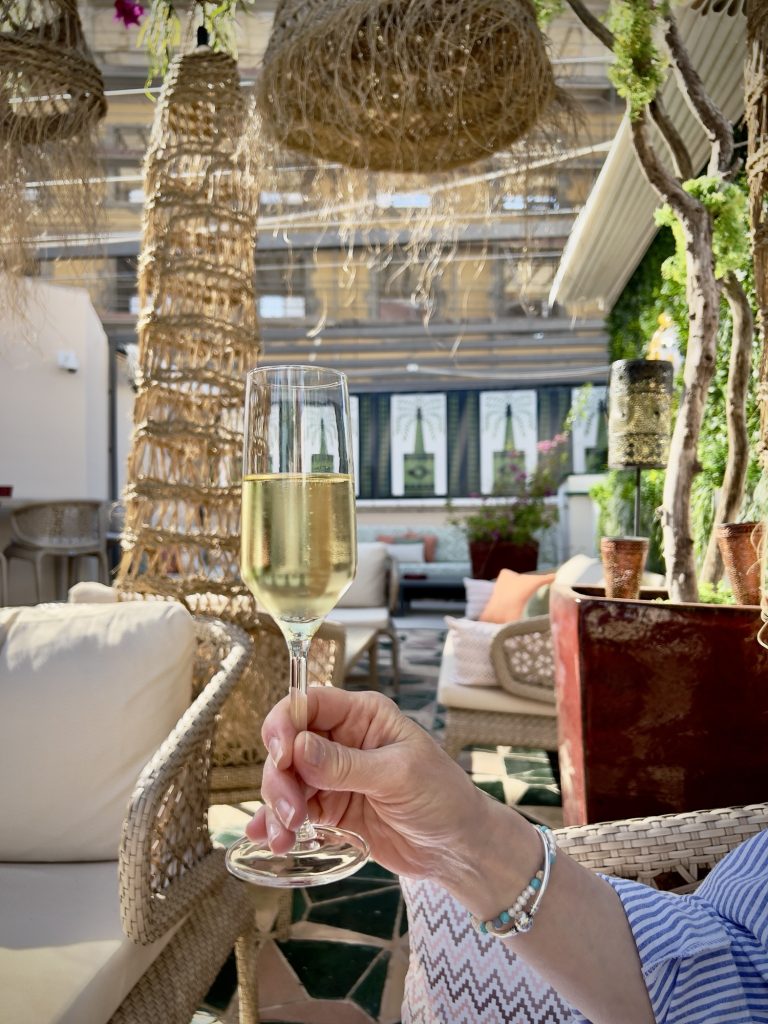
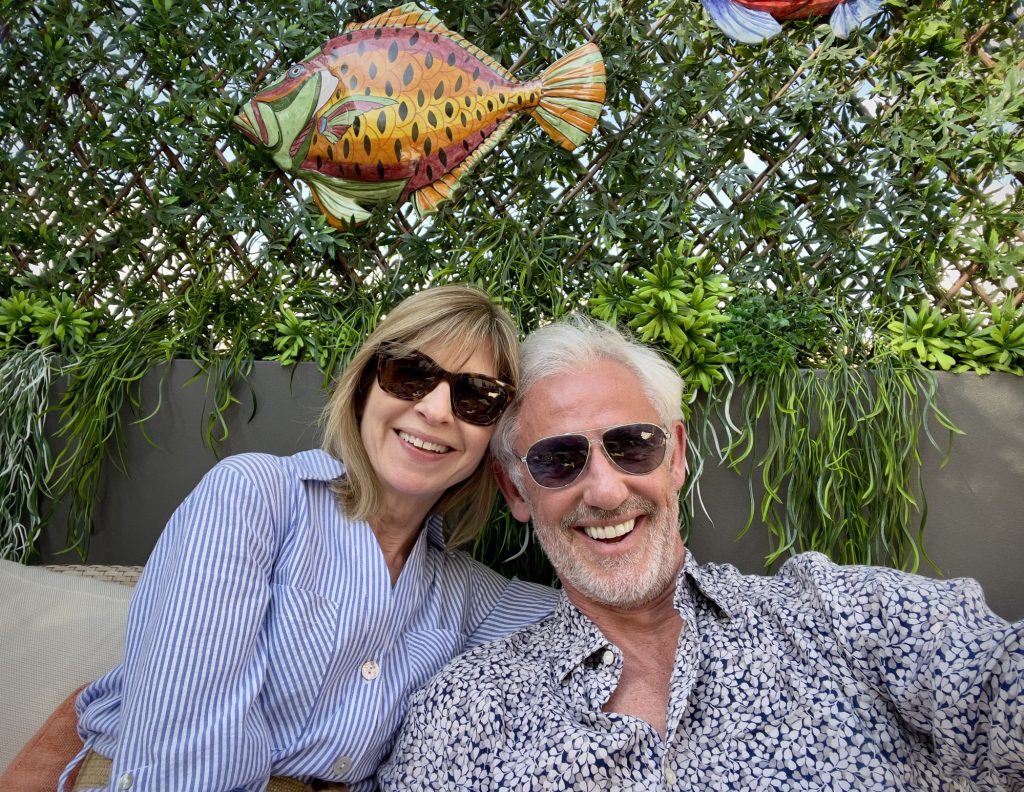
The next day we were up early as we had booked tickets to the Real Alcázar.
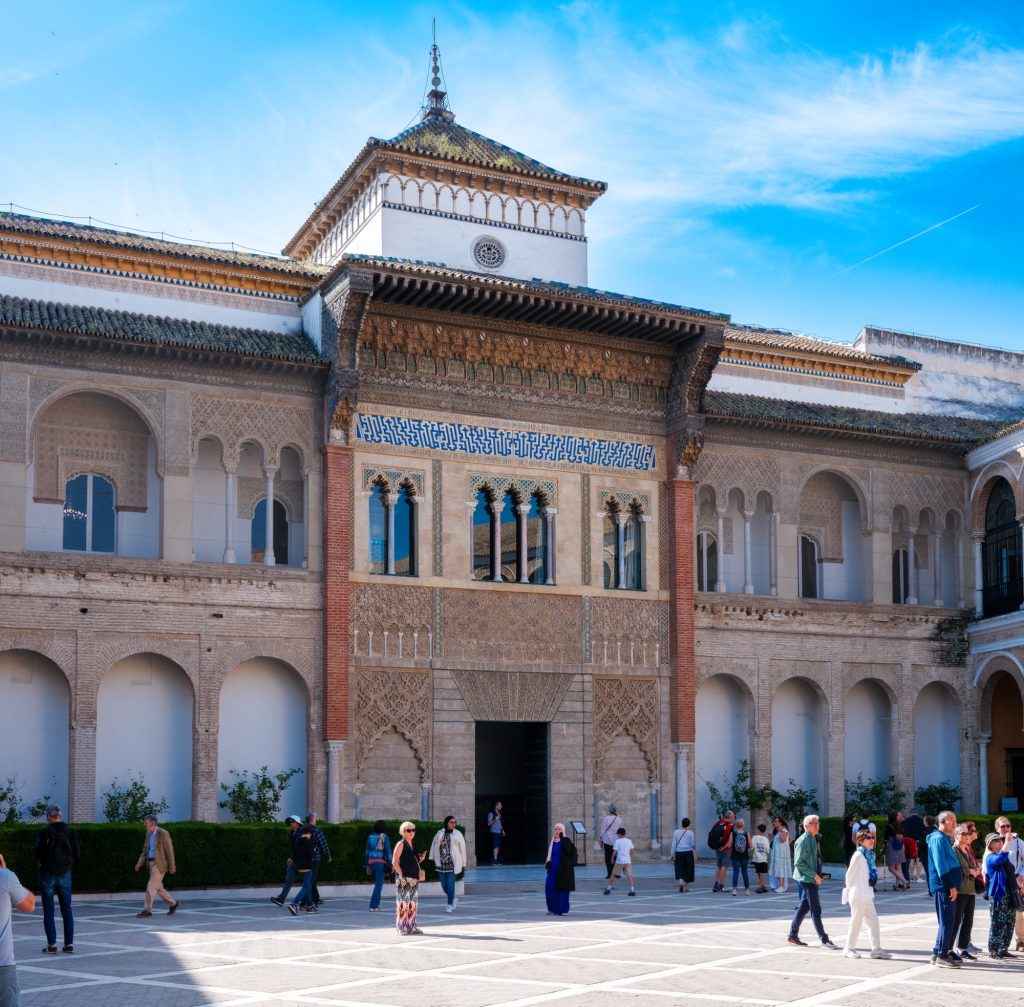
For those of you who haven’t visited it, the Alcázar of Seville is a historic royal palace in Seville and was formerly the site of the Islamic-era citadel of the city, begun in the 10th century and then developed into a larger palace complex by the Abbadid dynasty. After the Castilian conquest of the city in 1248, the site was progressively rebuilt and replaced by new palaces and gardens. The palace is a preeminent example of the Mudéjar style in the Iberian Peninsula and also includes sections with
Gothic and Renaissance architecture. Even today the upper stories of the Alcázar are still occupied by the royal family of Spain.
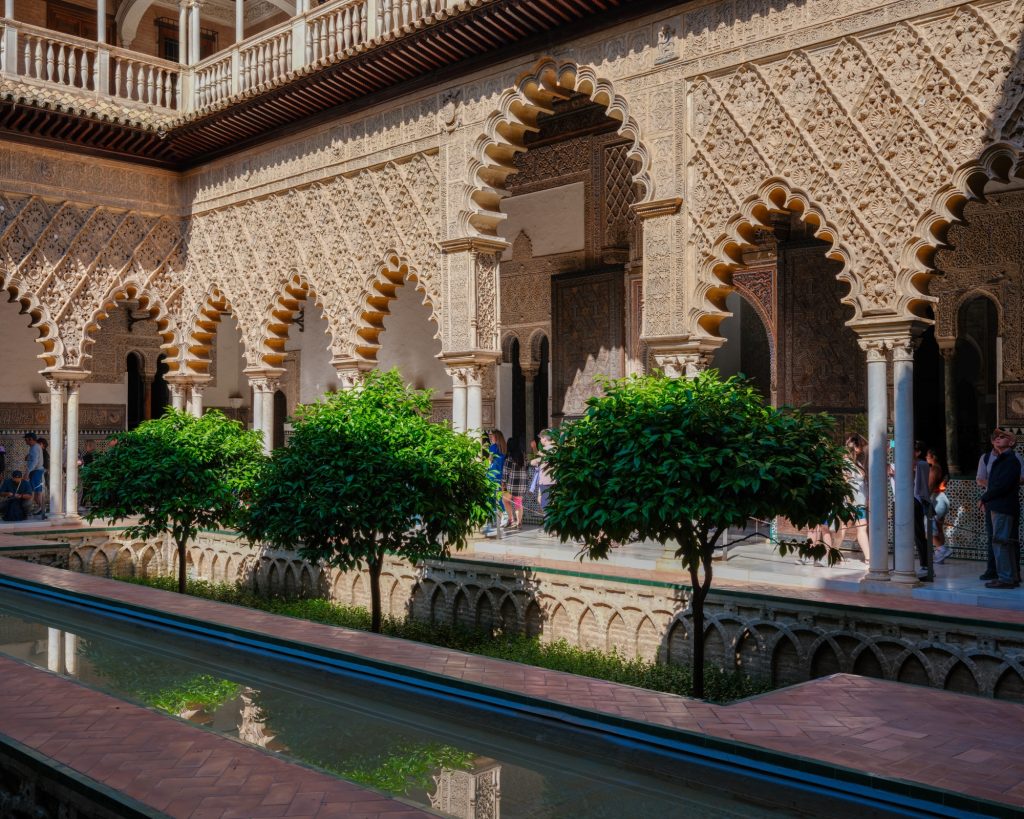
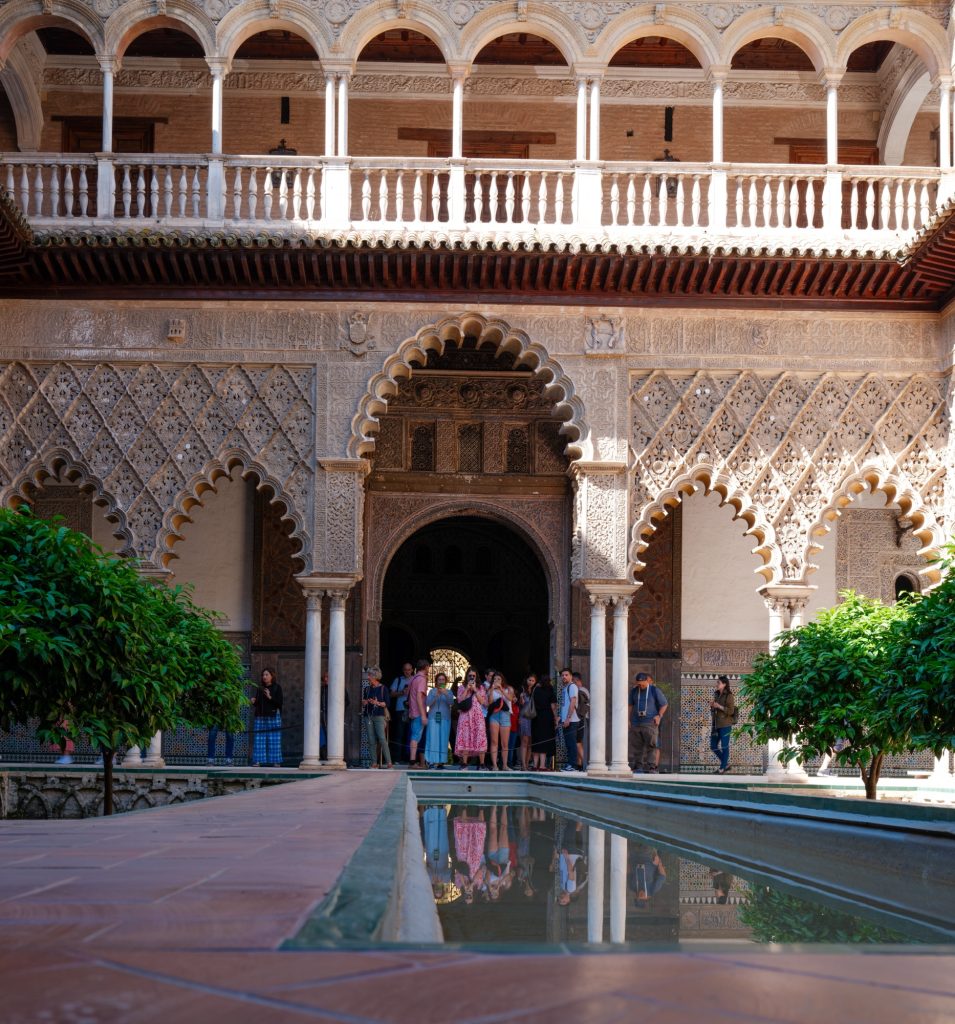
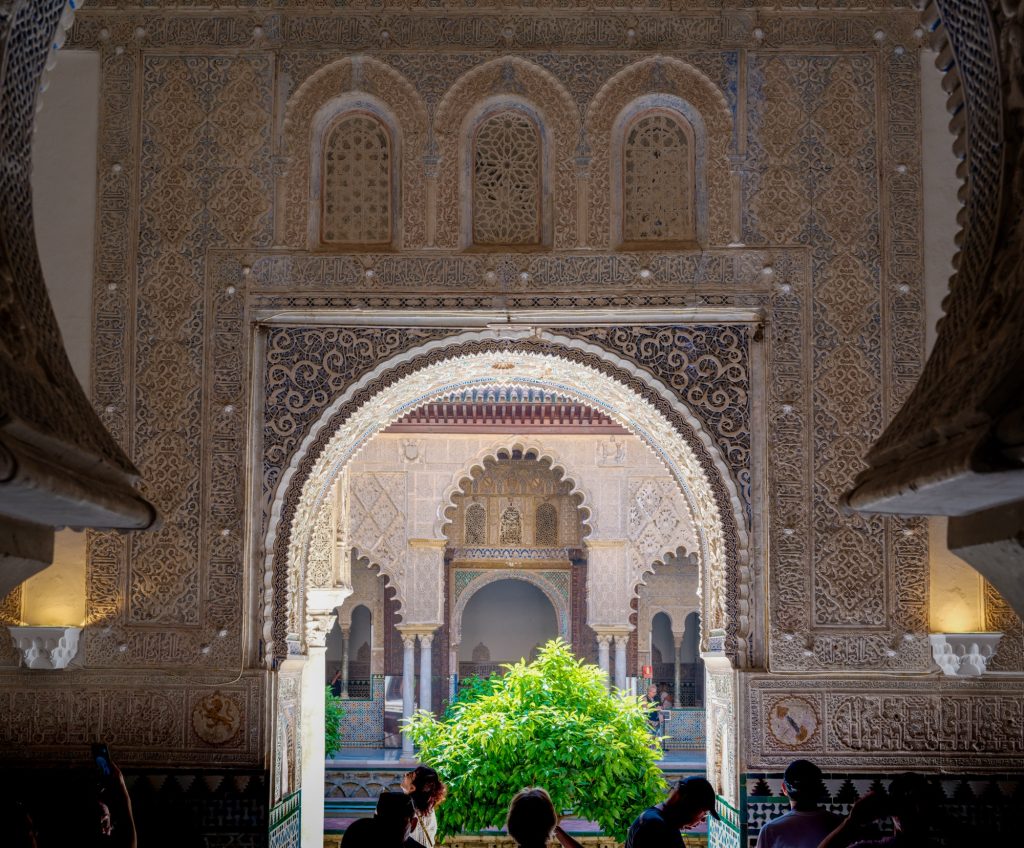
Even though we had been wowed by both the Alhambra in Granada and the Mezquita in Cordoba we were still amazed by the internal decoration of the Alcazar here.
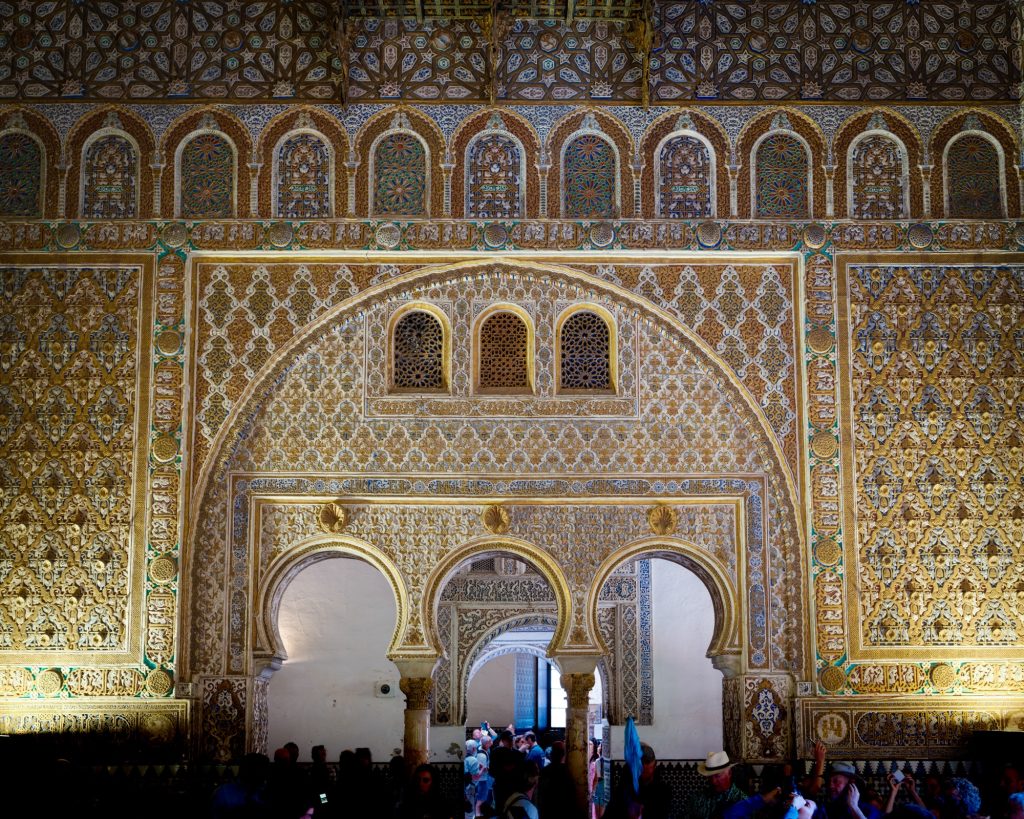
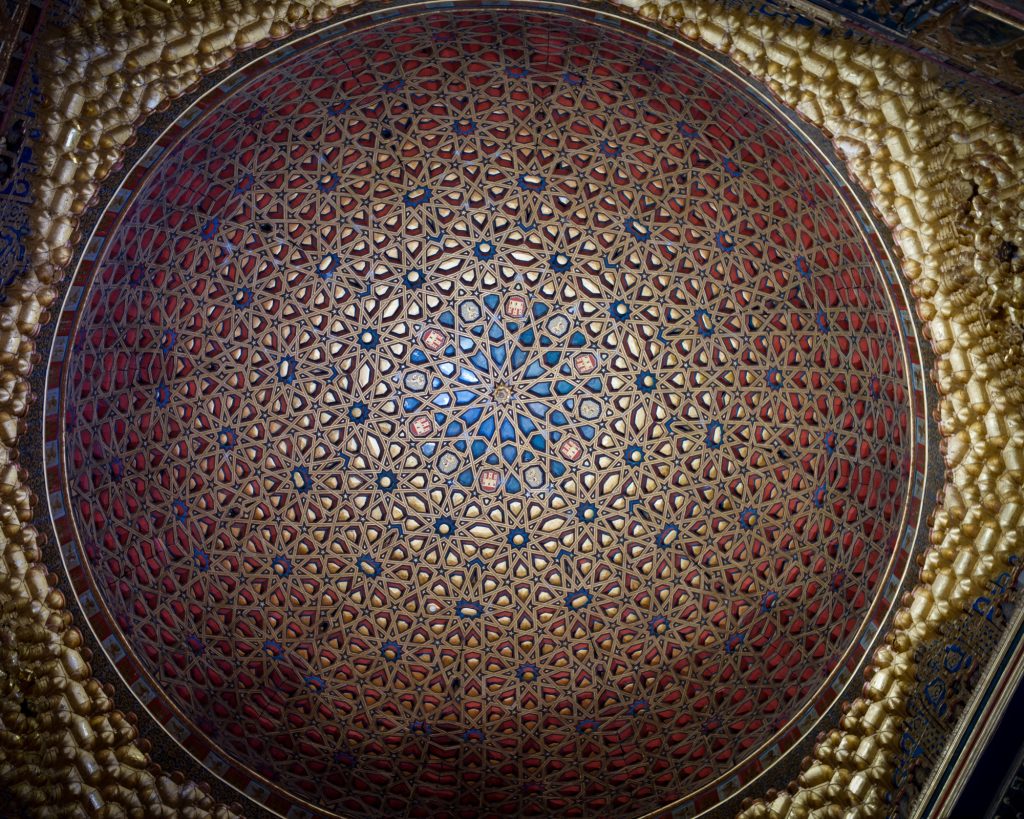
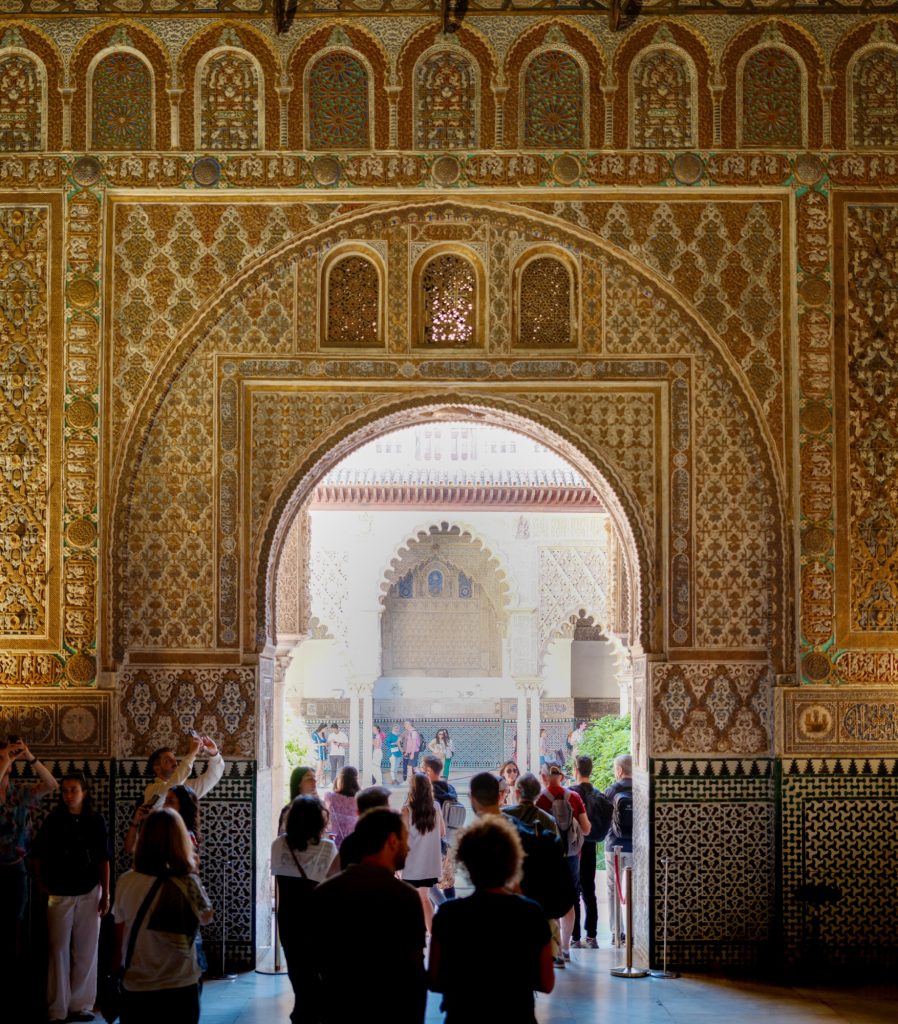
We finished our tour by taking a walk through the gardens. This was the only slightly disappointing part of the complex, as whilst they were lovely they are full of speakers, lights, power-packs and the occasional glitter ball which are part of an evening light-show.
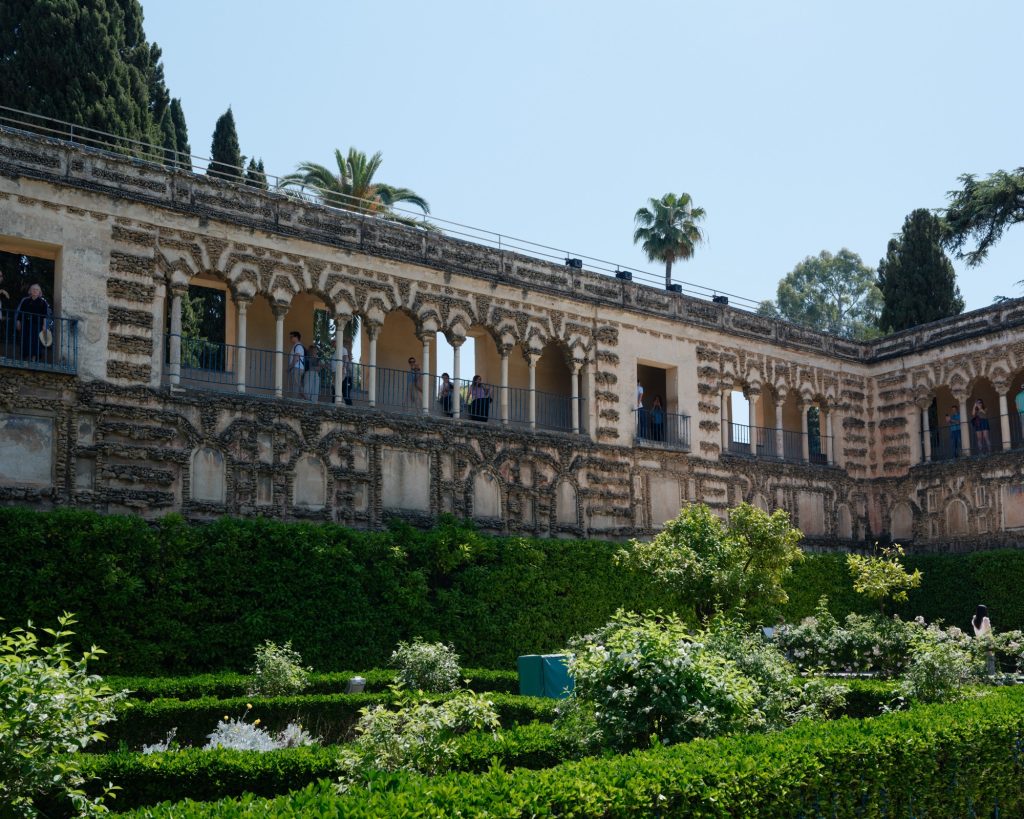
Our next stop was something very different – the Museum of Flamenco Dance which gave us a real insight into the origins and development of flamenco and how it became the art form it is today. Do pay it a visit if you are in Sevilla !
And then it was a bit of lunch before we headed over to the Cathedral of Sevilla where we worked off our tapas and wine by climbing the 34 floors to the top of La Giralda – the cathedral tower.
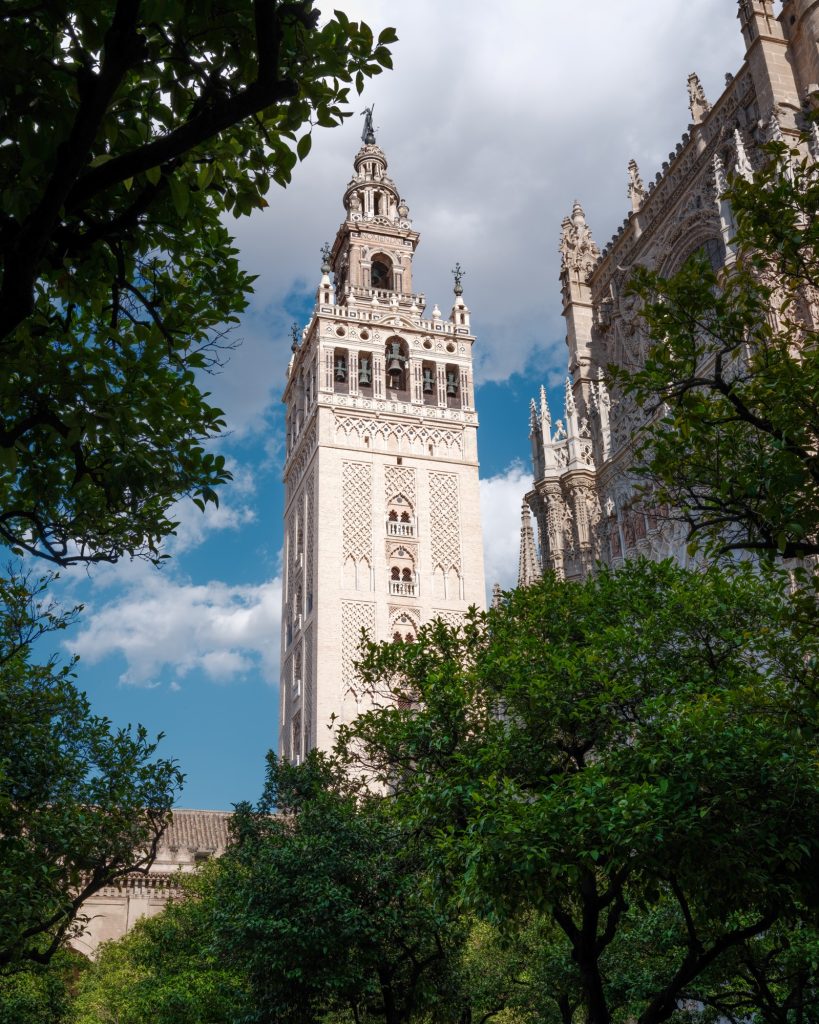
It was originally built as a minaret for the great mosque of Sevilla and was completed in 1176, with the Renaissance style belfry being added later by the Catholics in the 13th century. Fortunately since then they have replaced all the steps with ramps so our journey to the top was much easier than it could have been 😂. Whilst the top was heaving with tourists (like us) we managed to get a few pictures amongst the throngs and safety barriers 😀
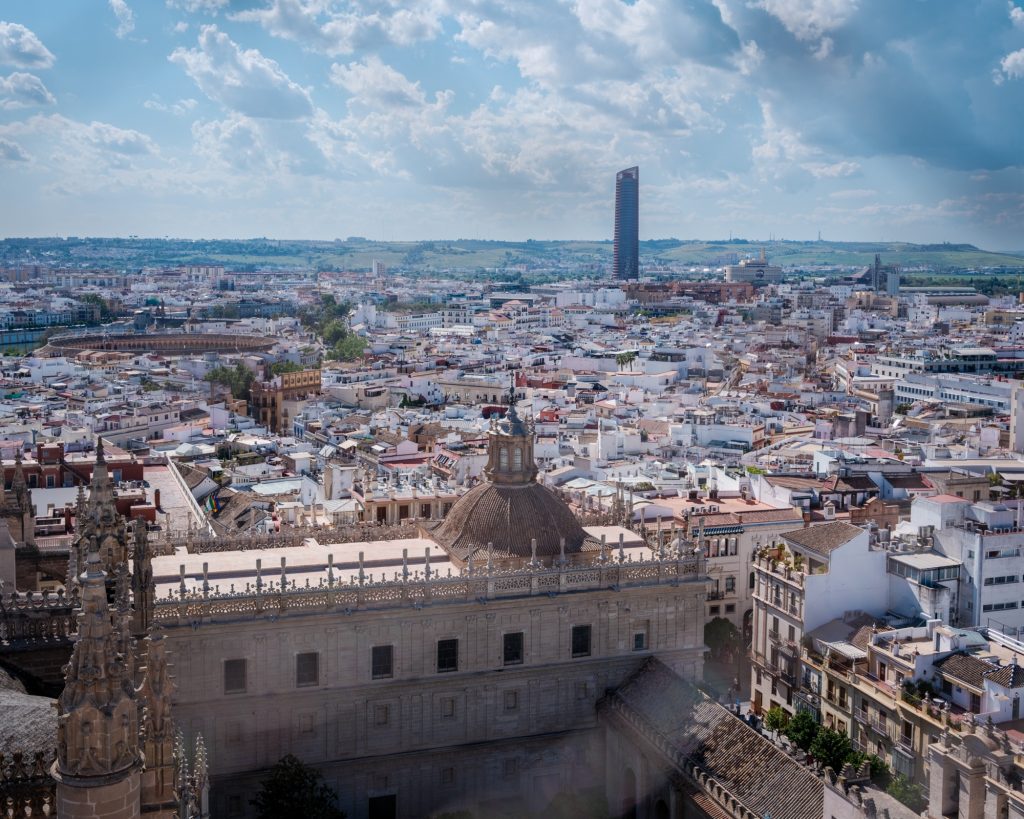
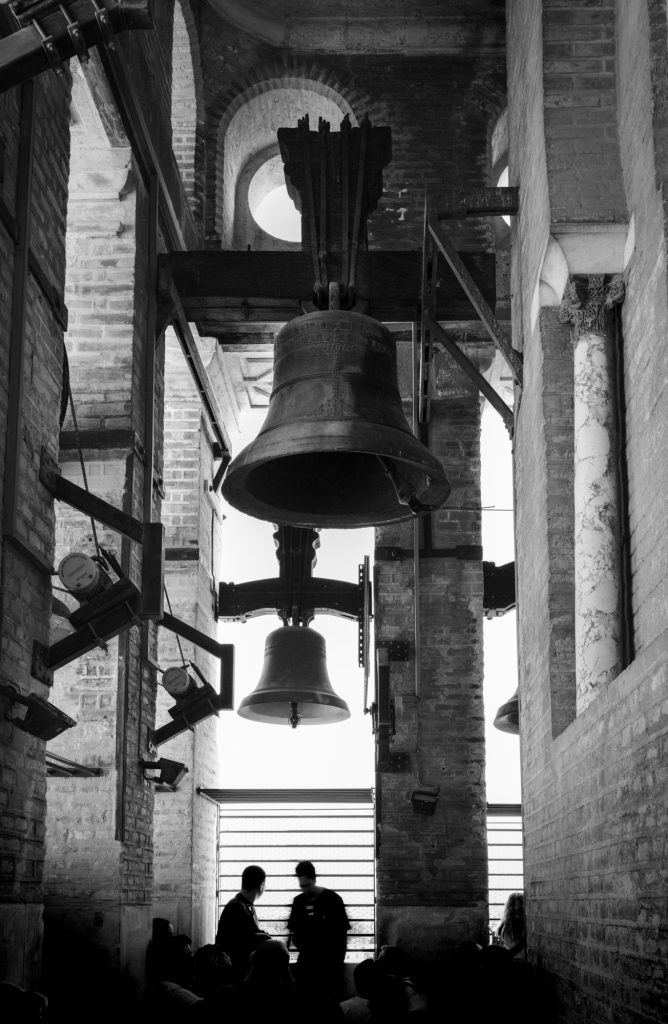
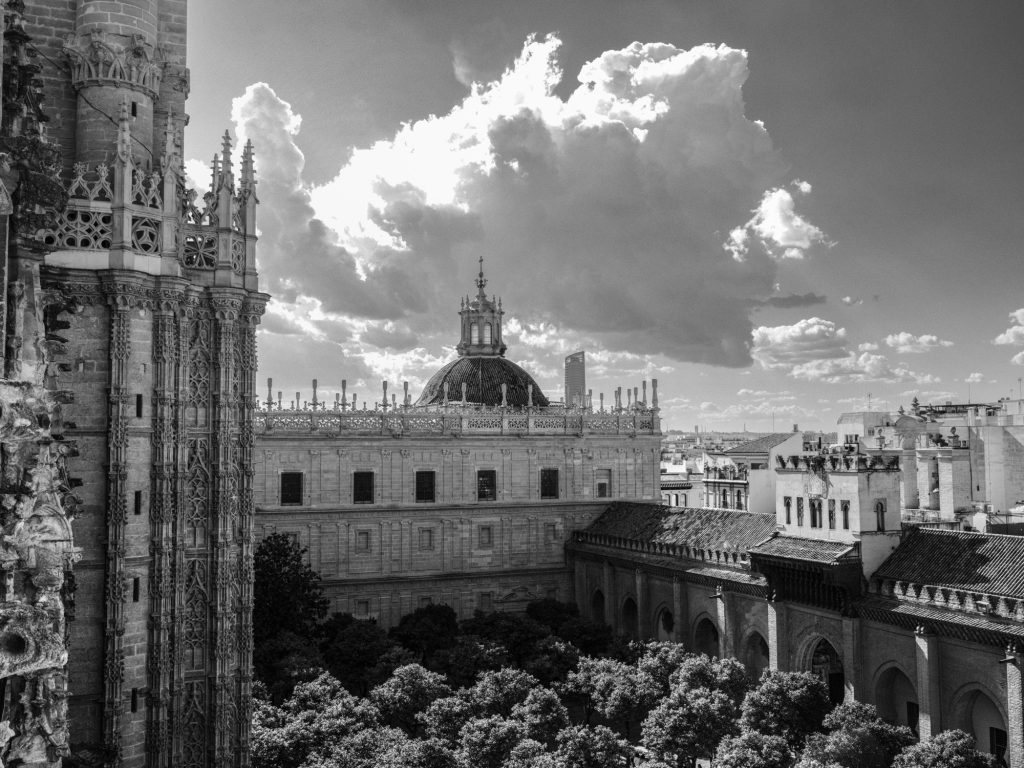
And then it was time to go inside…. The Cathedral of Seville is the largest gothic cathedral in the world, and the third church in size after St. Peter’s Basilica of the Vatican in Rome, and St. Paul in London. In 1987 it was declared a World Heritage Site by UNESCO and contains 138 stained glass windows. It is beautiful.
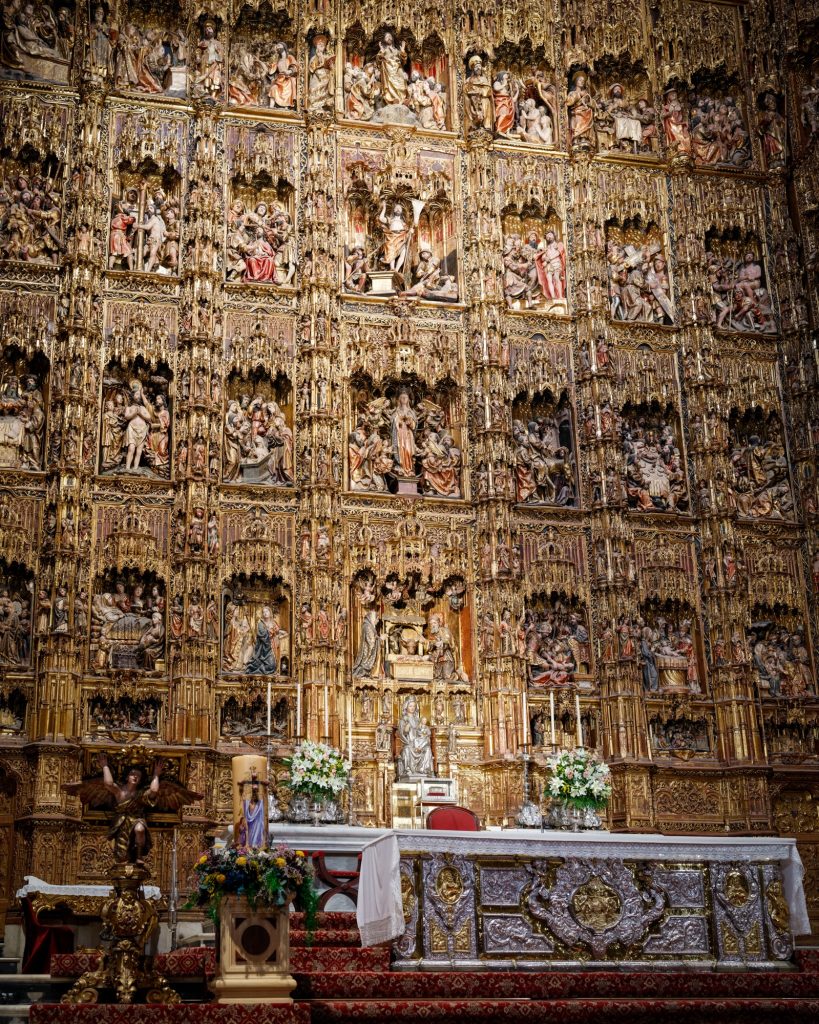
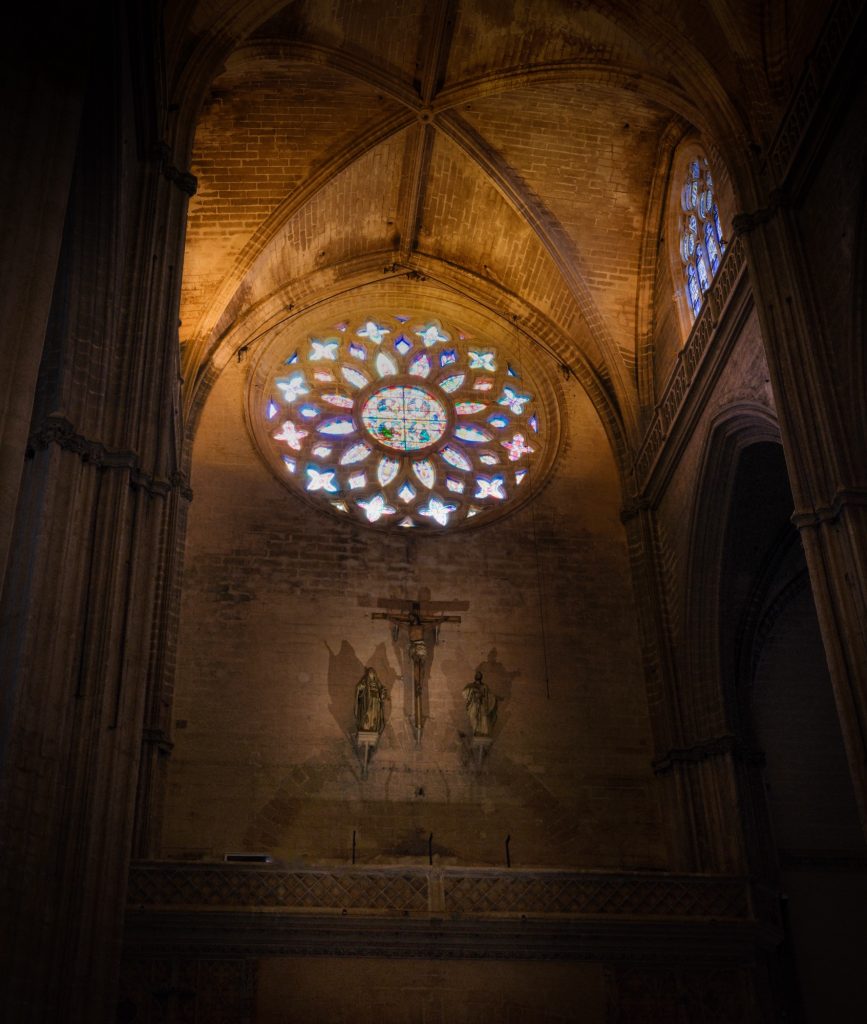
The central navel stretches skywards reaching 42m giving a sense of vastness and magnificence to the interior, further emphasised by the massive pillars that flank it.
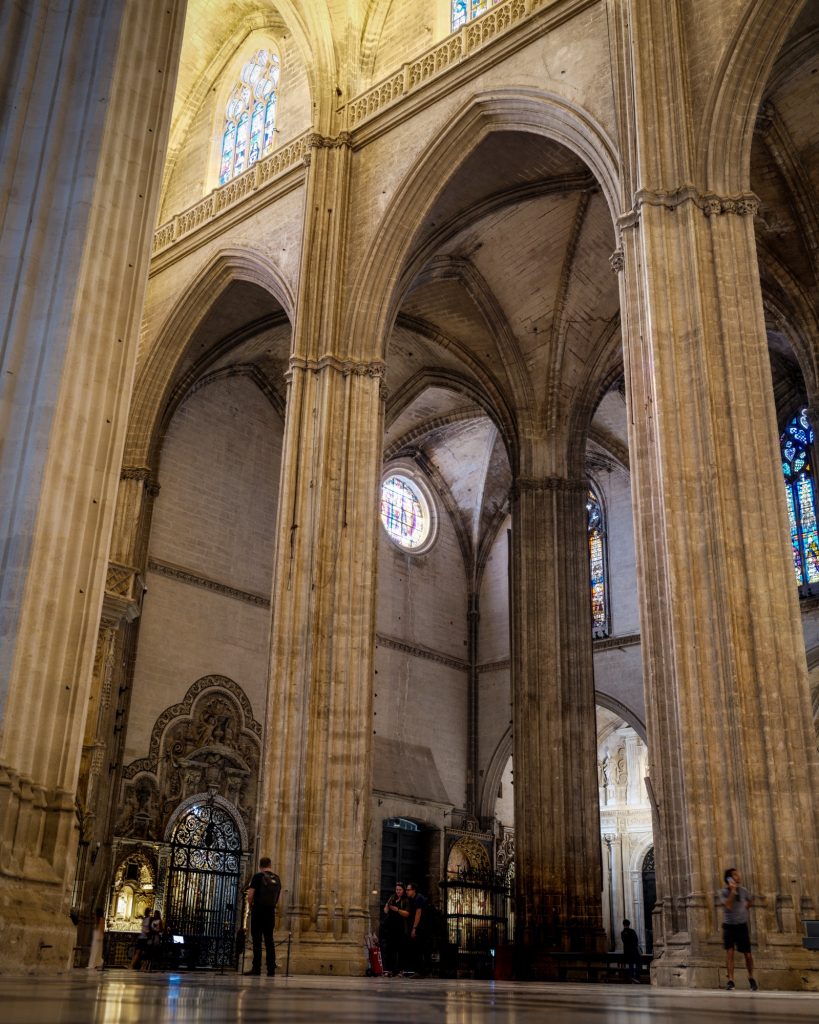
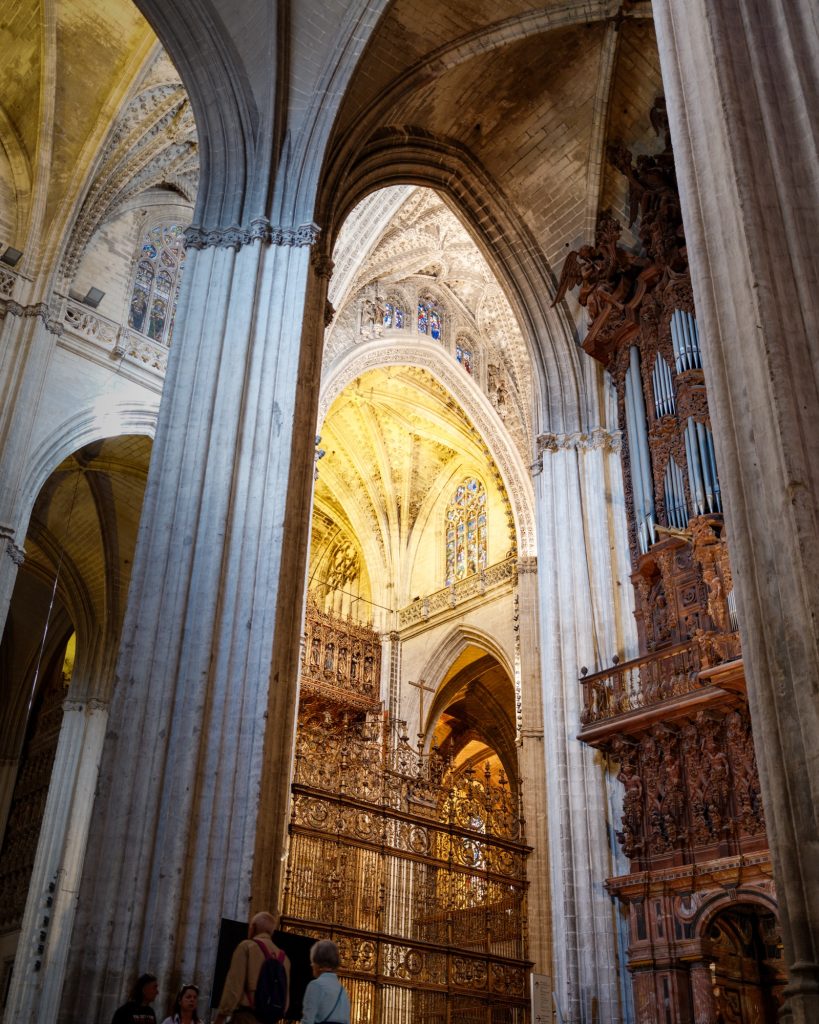
And if that wasn’t enough it also contains the ornate tomb of Christopher Columbus who was buried there in 1898.
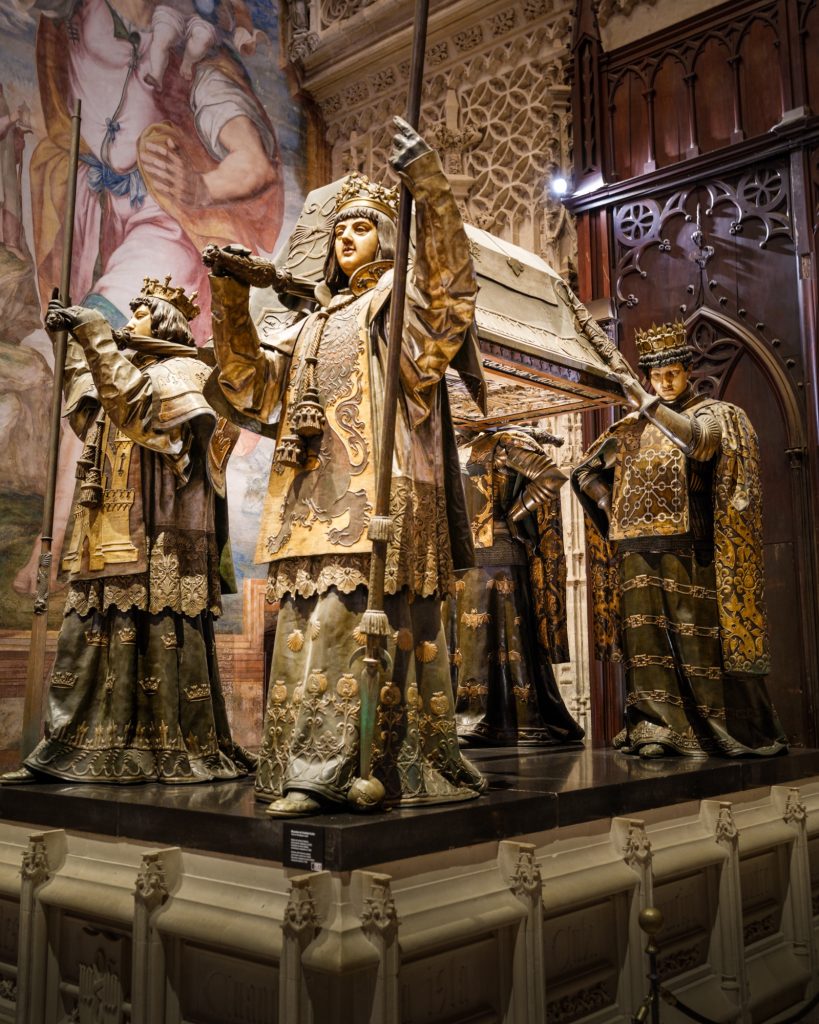
That completed a very full day in Sevilla ! However, we had one more site to visit the following morning before we headed to the railway station – the famous Setas !
In 2003, the Sevilla City Council held an international ideas competition for the rehabilitation of La Encarnacion square in the city centre. The winner was German architect Juergen Mayer and the development was initially given the title Metropol Parasol. However the locals quickly adopted the colloquial nickname of the setas, or mushrooms, and Seville then officially adopted the name. The Setas are constructed of 3,500 cubic meters of micro-laminated Finnish pine and are the world’s largest wooden structure.
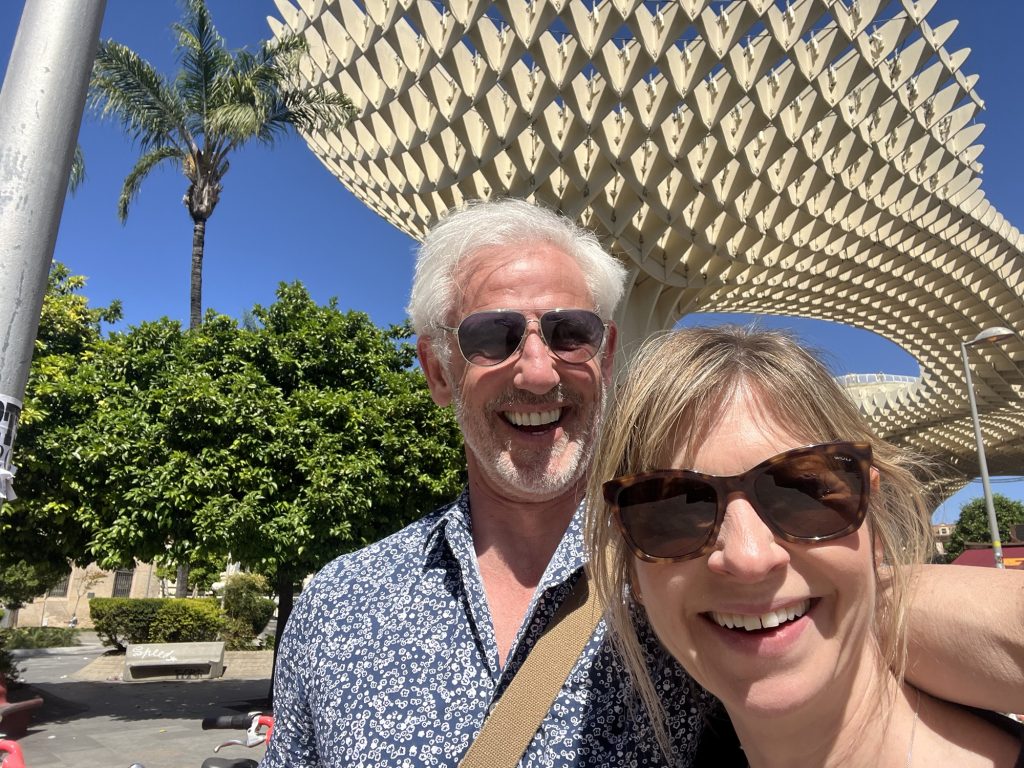
As we were there in the morning is was pretty quiet and we got some great views over Seville.
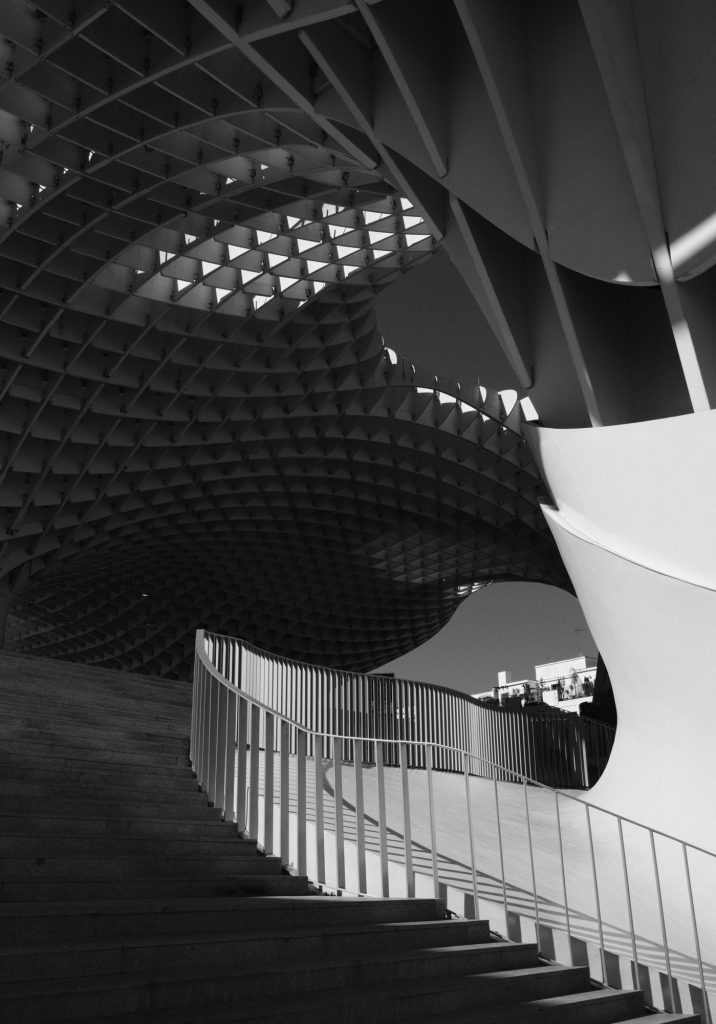
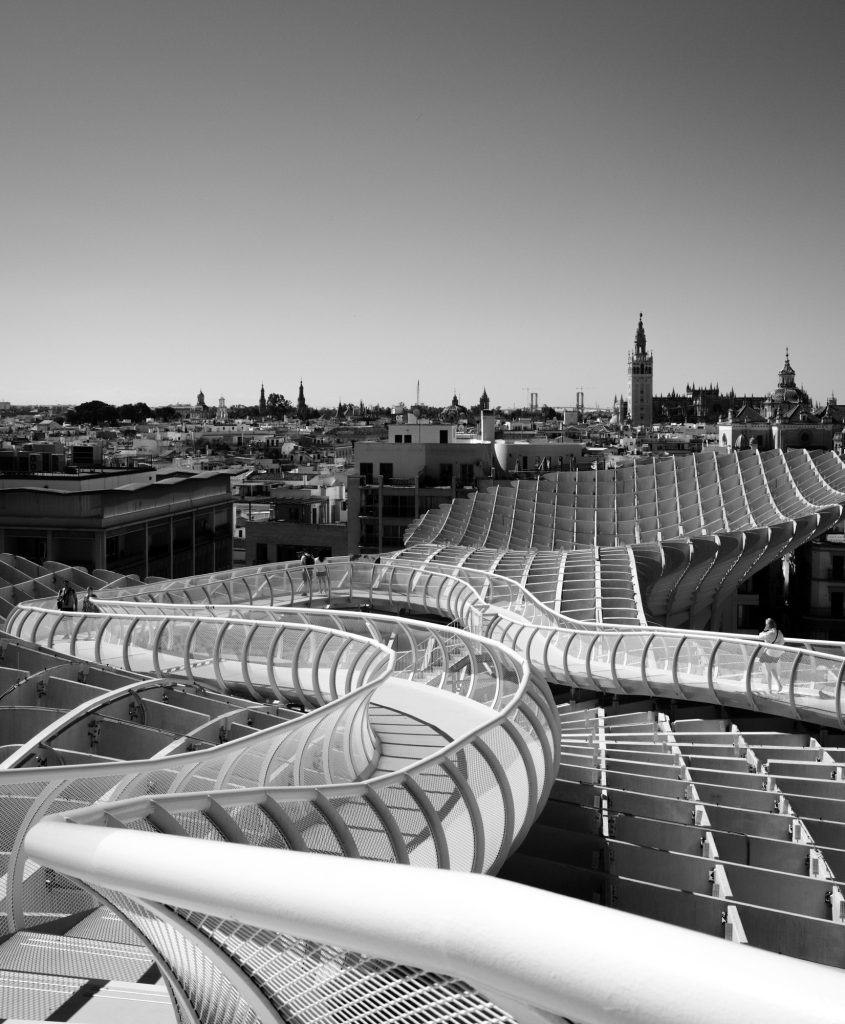
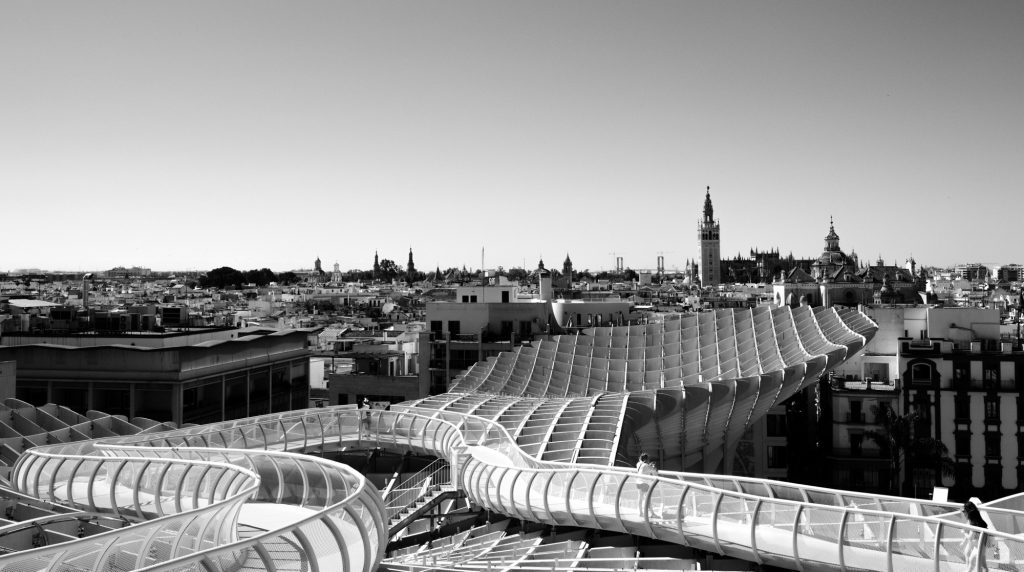
As well as Sue striking a pose ! 😀
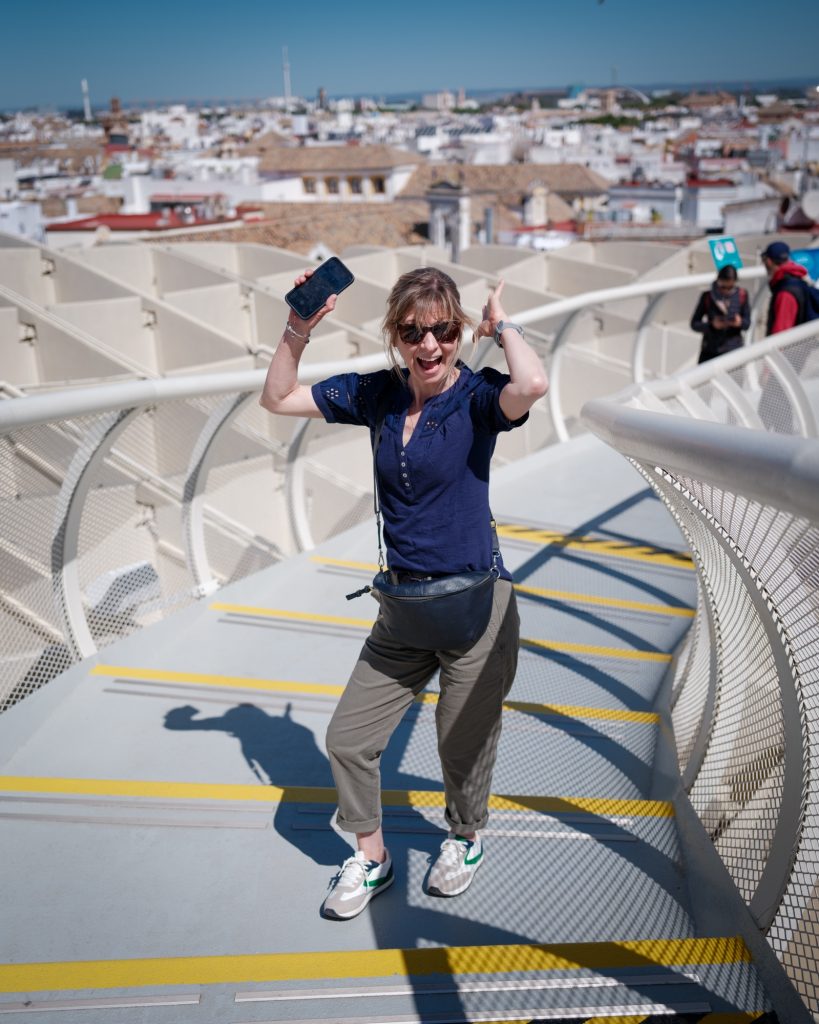
And that folks is the end of our three action packed nights in Sevilla !! Stay tuned for our next and final post from Spain !
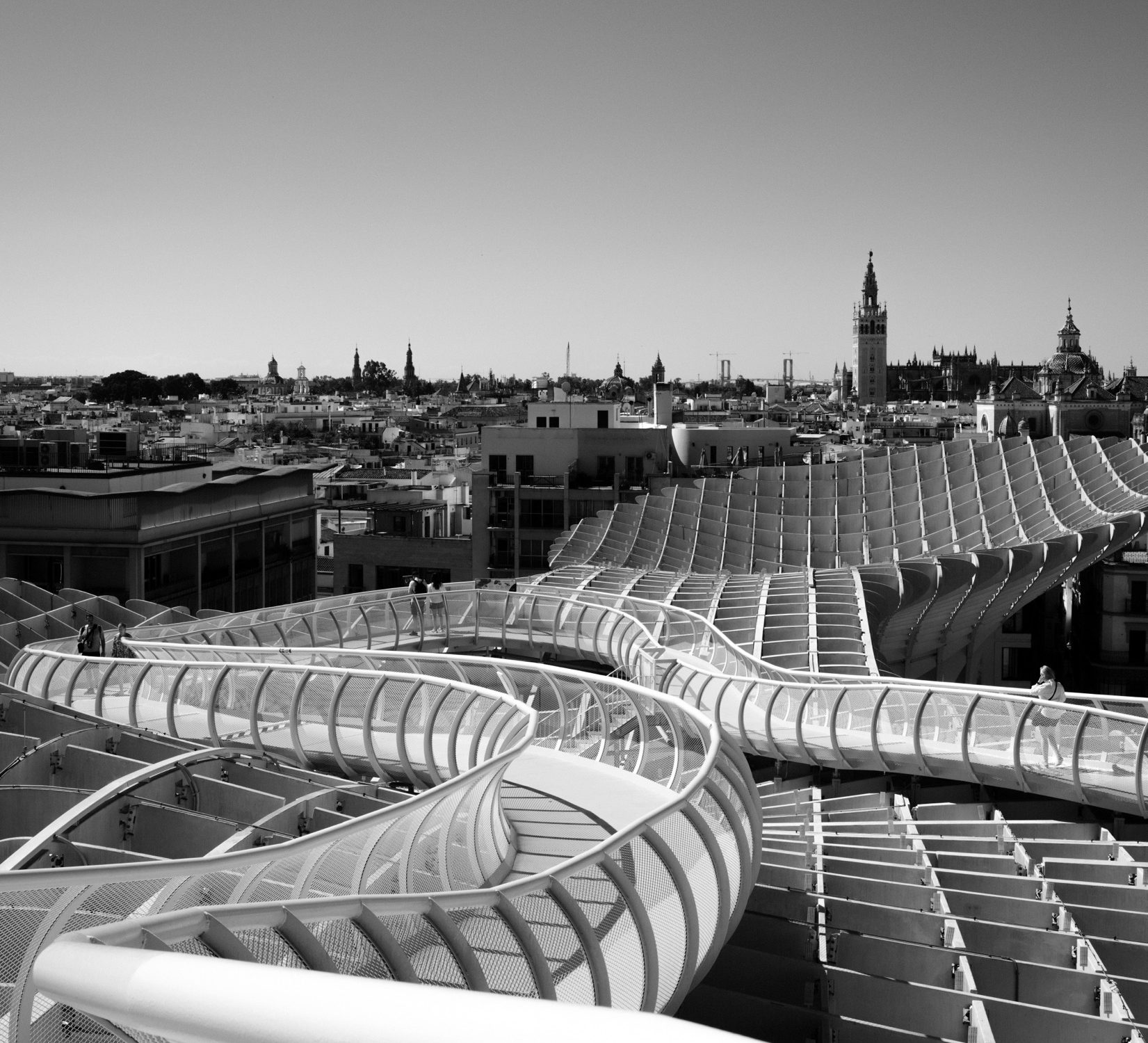
It all looks truly amazing. The research before travelling has well and truly paid off. Never seen an altar as opulent as the one in the cathedral. Magnificent! X